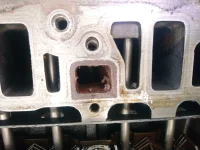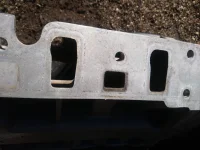localhorst
New member
- Joined
- Aug 22, 2018
- Messages
- 9
- Reaction score
- 1
- Points
- 3
- Location
- Freiberg / Germany
- Buick Ownership
- 1996 Buick Park Avenue
Hello, I'm replacing the seals on the upper and lower intake manifolds. That's a well-known problem. The cooling water became less and less and it smoked white from the exhaust pipe.
Since my intake manifold shows some traces of the seal, I would like to know whether it would be sensible to replace it at the same time? How do you assess the condition (see photo) of the intake manifold? I am concerned that water or oil can run under the seal and cause damage again.


Since my intake manifold shows some traces of the seal, I would like to know whether it would be sensible to replace it at the same time? How do you assess the condition (see photo) of the intake manifold? I am concerned that water or oil can run under the seal and cause damage again.





